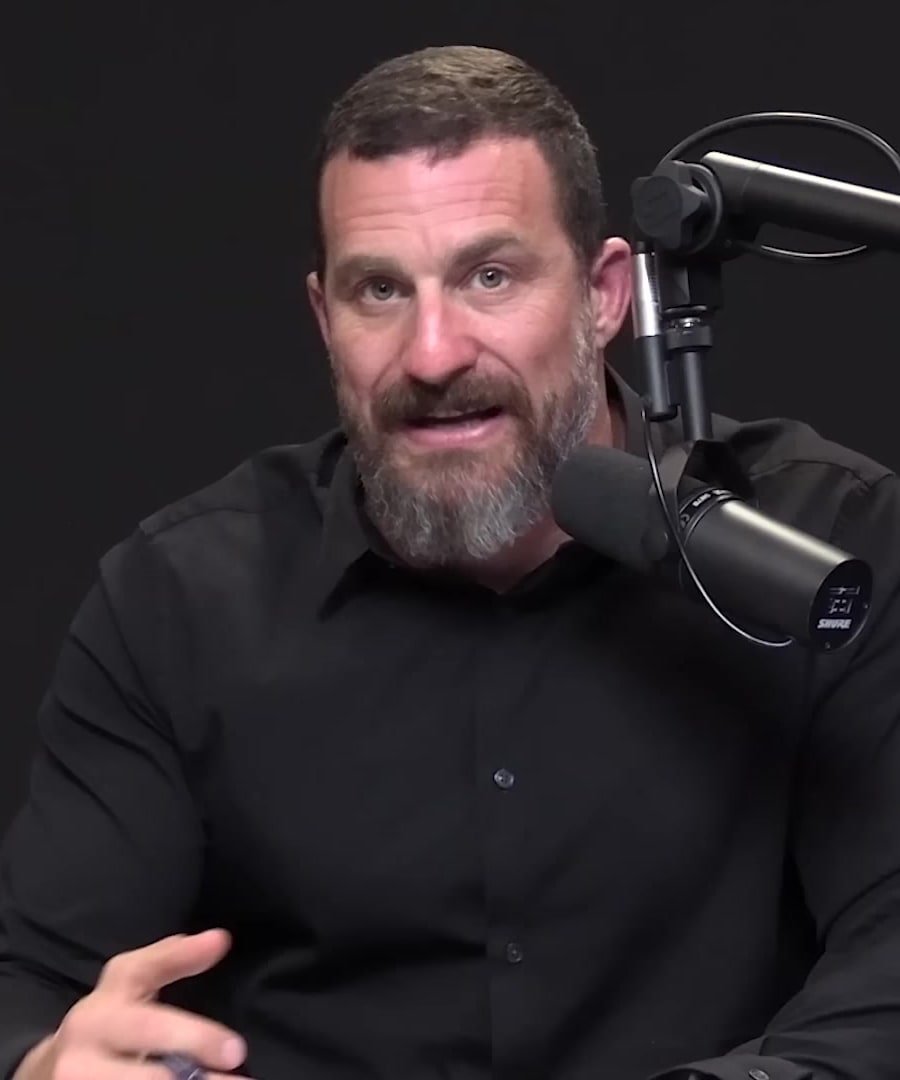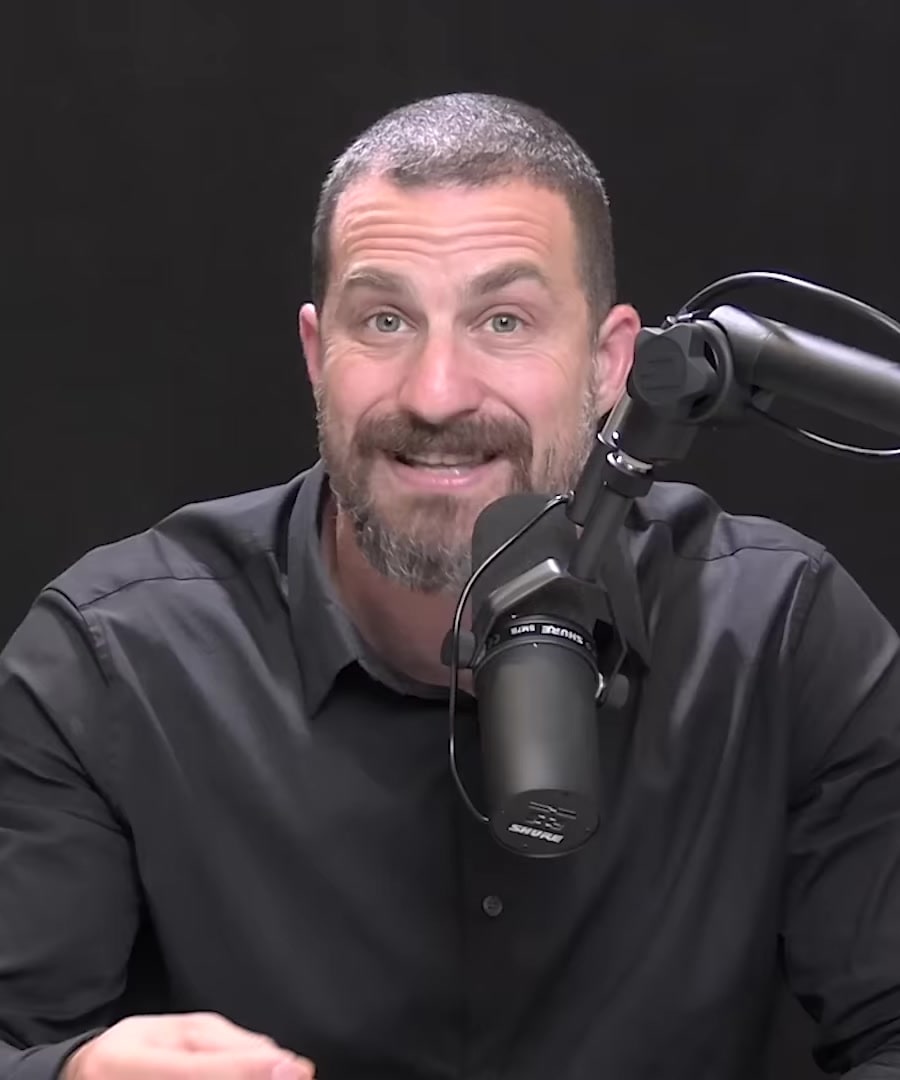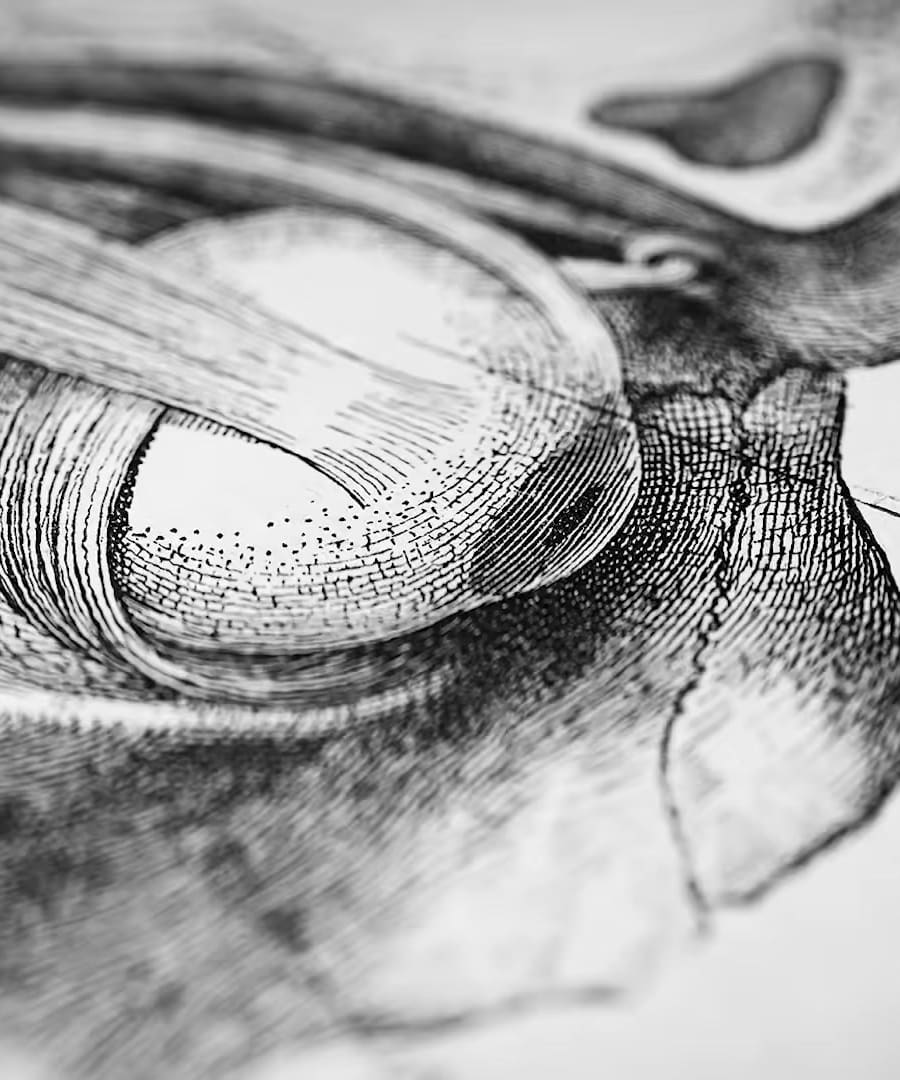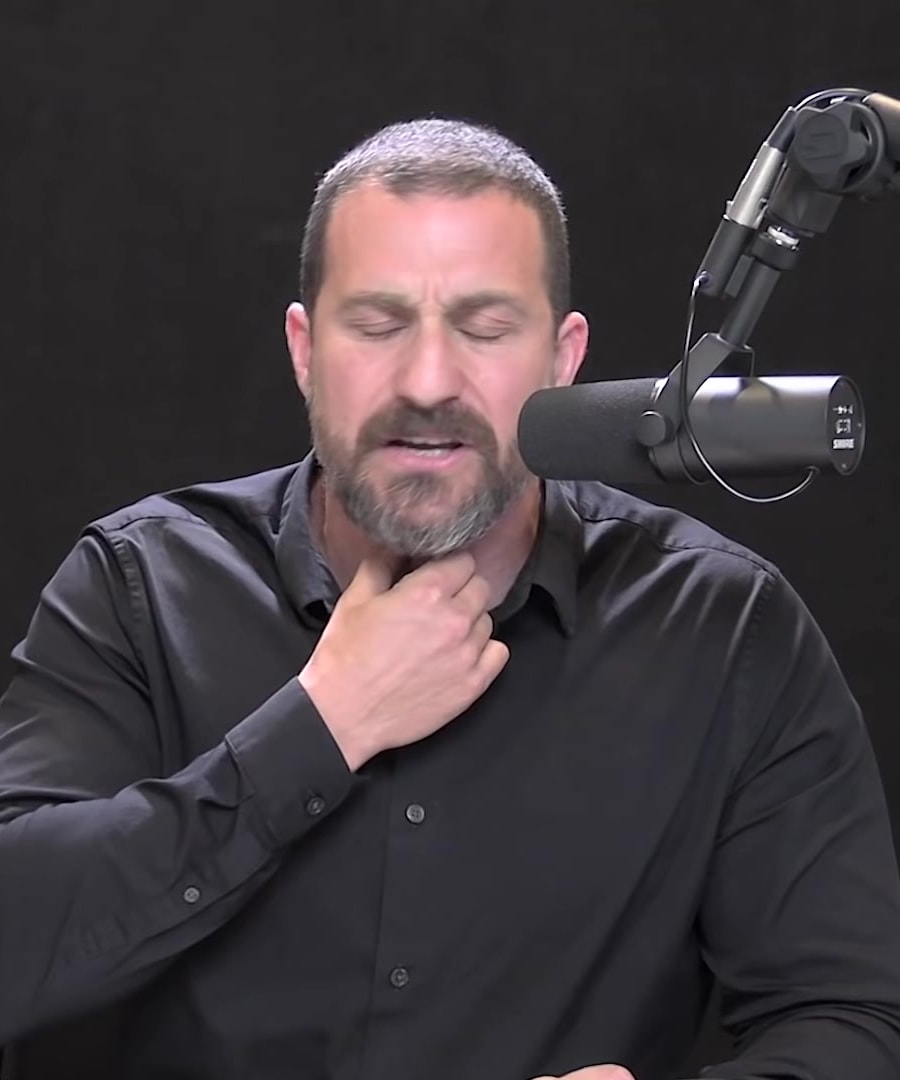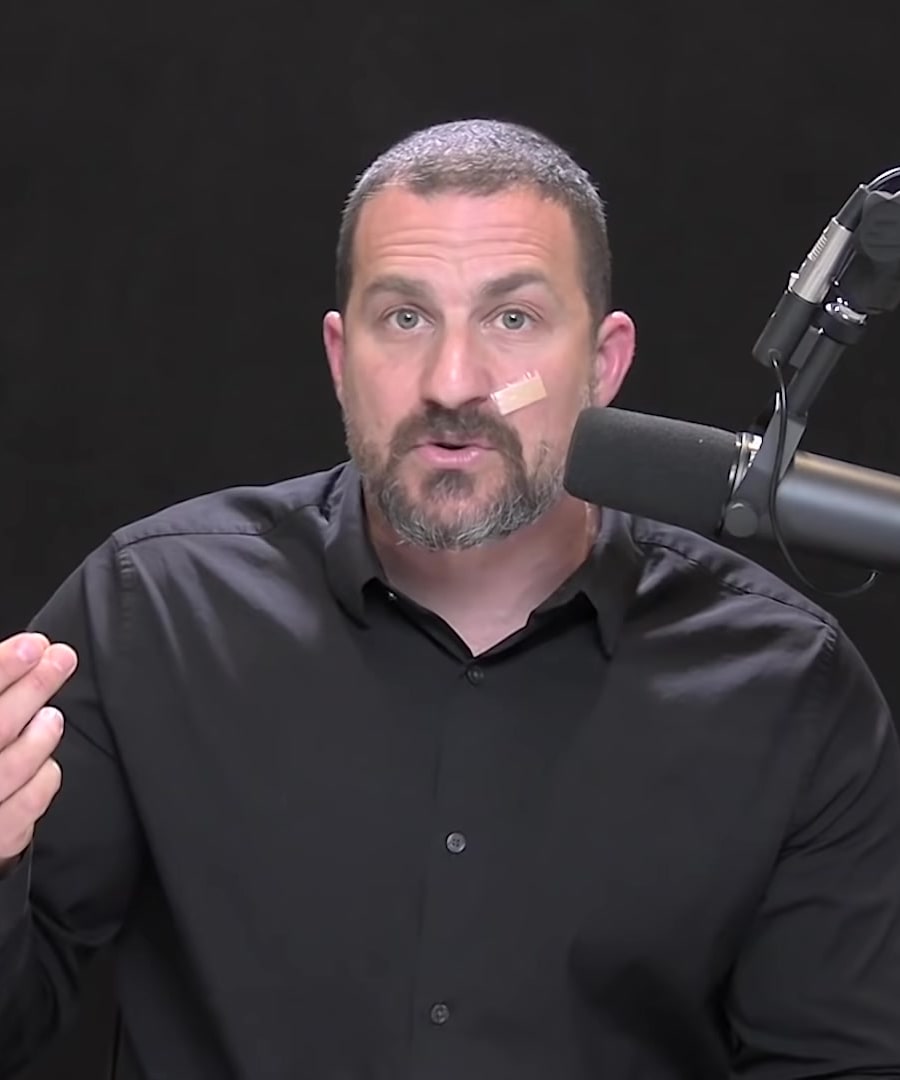How to breath?
Sources:
Breathing is a fundamental process that we all engage in, and the way we breathe can have significant effects on our mental and physical health. has discussed various aspects of optimal breathing on the .
Here are key insights drawn from his discussions on breathing:
-
Rhythmic Breathing: Control your breathing in a rhythmic pattern (inhale-exhale) to navigate stressful situations, as rhythmic breathing can make such situations less stressful or even pleasant. Controlling breath is particularly useful when under emotional or physical stress 1.
-
Nasal Breathing: Breathe through the nose for healthy breathing, as nasal breathing helps in delivering more oxygen and generating more air pressure to fill the lungs. Breathing through your nose should provide pauses between breaths, balancing oxygen and carbon dioxide for a healthy respiratory exchange 2.
-
Diaphragmatic Breathing: While nose and mouth are the primary channels for air, the diaphragm and intercostal muscles help your lungs expand and contract. Understanding and independently controlling these components is powerful for regulating your mental and physical states 3 4.
-
Physiological Sigh: A calming technique called the physiological sigh involves two deep inhales through the nose, followed by a long exhale through the mouth. This optimally balances oxygen and carbon dioxide and quickly reduces stress 4.
-
Avoid Overbreathing: Many people tend to overbreathe, which can cause hyperventilation and reduce carbon dioxide levels, leading to a hyperexcitable state of the brain and inefficient learning. The correct pattern of breathing is associated with proper oxygen-carbon dioxide balance 2.
-
Breathing and Emotion: Breathing patterns can influence emotion. Nasal breathing can lead to several physical and cognitive benefits such as improved reaction time, and memory. Additionally, nasal breathing is generally considered to be the better way to breathe when not actively needing to breathe through the mouth due to physical activity 5.
Remember, while these insights provide guidance on healthy breathing patterns, it's always a good idea to consult with a healthcare professional for personalized advice about breathing techniques, especially if you have health concerns or conditions that affect breathing.
RELATED QUESTIONS-
Could you elaborate on the science behind breathing?
Sources:
The science behind breathing encompasses mechanical and chemical aspects within the body. Here are key scientific insights regarding breathing, as discussed by :
Mechanical Aspects
-
Breathing Mechanics: Breathing involves not just the nose and mouth, but also the larynx, lungs, avioli, and muscles such as the diaphragm and the intracostal muscles of the ribs. The larynx must be rigid to prevent collapse during vigorous breathing. Managing these mechanical components helps regulate mental and physical states 1.
-
Nasal vs. Mouth Breathing: Nasal breathing differs from mouth breathing in resistance to air. Mouth breathing can lead to aesthetic changes in the face and jaw that are not favorable, such as elongation of the jaw and droopiness of the eyelids. By contrast, nasal breathing can result in positive aesthetic changes like elevated cheekbones and a more defined jawline. A rigid larynx is crucial, as it prevents collapse when air is moved in and out 2.
Chemical Aspects
-
Gas Exchange: Oxygen is inhaled and moved from the lungs into the bloodstream via microcapillaries in the alveoli. This gas exchange is vital for bringing oxygen to cells and maintaining proper carbon dioxide levels. The impulse to breathe arises from a neural drive to eliminate carbon dioxide when it reaches a threshold in the bloodstream 3.
-
Breathing Chemistry: A breathing exercise described by involves deep inhalation followed by passive exhalation, repeated 25-30 times, which changes the body's internal chemistry. This practice increases adrenaline levels, enhancing alertness and impacting breathing at a chemical level 4.
Influence on Health and Function
-
Impact on Organ Health and Function: The patterns of breathing, controlled by different brain centers discovered by Dr. Jack Feldman and colleagues, influence how focused we are, our ability to fall asleep, and our overall mental and physical health 5.
-
Immune System Control: Controlled adrenaline release through specific breathing techniques, such as those based on the Wim Hof method, can influence immune responses to challenges, such as fighting off infections or responding to E. coli, as demonstrated in human studies 6.
emphasizes that conscious control over breathing allows us to interface between conscious and subconscious behaviors. By controlling our breathing, we can directly influence our brain's excitability and its ability to learn, remember, and maintain focus, as well as to relax and manage stress 7.
In summary, the science behind breathing is complex and intertwines with various physiological systems, affecting our health, state of mind, aesthetics, and overall well-being. The control we can exert over this process through different breathing patterns and techniques offers powerful tools for influencing our body and mind.
RELATED QUESTIONS-
Can you explain different breathing techniques?
Sources:
The science behind breathing encompasses both mechanical and chemical aspects, as well as the complex interplay between them. Here's an overview of the key points from the that explain the science behind breathing:
Mechanical Aspects of Breathing:
- Breathing involves pulling air in (inhaling) and pushing air out (exhaling).
- The principal muscle for inhalation is the diaphragm, which contracts and pulls down to expand the lungs, decreasing pressure inside, causing air to flow in.
- At rest, exhalation is passive—like releasing a spring tension after contracting it during inhalation 1.
- The lungs consist of numerous alveoli (tiny sacs) which, combined, have a large surface area that facilitates gas exchange with the capillaries 2.
Chemical Sensing and Regulation:
- Balanced levels of oxygen (O2) and carbon dioxide (CO2) are crucial for body metabolism.
- Chemoreceptors in the brain detect elevated levels of CO2, triggering the urge to breathe—we inhale not just for oxygen but to eliminate CO2 3.
- Proper breathing supports a healthy pH balance in the blood, which is vital for cellular function.
Influence of Breathing on Mental and Physical States:
- The patterns of breathing, such as the duration and intensity of inhales and exhales, significantly affect our state of mind and body capabilities 4.
- Breathing functions at the interface between conscious and subconscious control, allowing us to voluntarily modify our mental health, physical health, and performance by changing the breathing pattern 4.
- Techniques like the "physiological sigh" improve stress response by optimally balancing O2 and CO2 during periods of stress or sleep 5.
How Breathing Affects Development and Health:
- Breathing is critical for regulating brain excitability, impacting learning, memory, focus, and anxiety levels 4.
- Nasal breathing is beneficial and can impact various factors, including cosmetic facial features, sleep quality, hormone balance, and even personality 6.
- Proper breathing is associated with improved oxygen delivery to tissues, including the brain 5.
The Relationship Between Breathing and Heart/Vascular System:
- The respiratory and cardiovascular systems are closely linked, with the process of breathing facilitating the exchange of gases between the air and blood through the alveoli and capillaries 3.
Understanding these concepts allows us to appreciate the significant role breathing plays not just in sustaining life, but also in influencing our mental state, physical performance, health, and personal development. Remember to consult healthcare professionals or certified breathing experts to explore personalized breathing techniques for specific conditions or goals.
RELATED QUESTIONSSummarize Dr. Jack Feldman: Breathing for Mental & Physical Health & Performance | Huberman Lab Podcast #54
The delves into the wide-ranging impact of breathing on mental and physical health and performance. Here's a brief summary of the key points:
-
Breathing and Health: The episode begins with an introduction to Dr. Jack Feldman, showcasing the profound implications of breathing for health, touching upon various techniques and their benefits.
-
Breathing Mechanics and Rhythm: The intricate mechanics of breathing are explored, including the different rhythms of breath and their effects on the body and mind.
-
Nose vs Mouth Breathing: The advantages of nasal breathing over mouth breathing are explained and its significance in physical health and facial structure.
-
Breathing Oscillators: Dr. Feldman discusses the concept of breathing oscillators and their roles, introducing the interrelation between the face and breathing.
-
Diaphragmatic Breathing: The importance of diaphragmatic breathing for lung and overall bodily health is highlighted.
-
The Science of Sighing: The episode covers the scientific aspects of sighing, its role in lung health, and its connections to emotions.
-
Breathing and Brain Function: Insights into how breathing affects brain function, brain states, and emotions are given a special focus.
-
Breathing Techniques and Health: The conversation touches on various breathing techniques, such as controlled breathing for eliminating fear and managing emotions, and the benefits of cyclic hyperventilation and episodic hypoxia.
-
Breathing and Coordination: The relation between breathing, coordination, and depression is mentioned, underlining breathing's influence on brain oscillations.
-
Breathwork Transitions: Discussion on how transitions in breathwork can benefit mental states and enhance focus and relaxation.
-
Supplements, Magnesium, and Cognition: While the main theme is breathing, the episode also veers into related topics such as the role of magnesium in cognition and neuroplasticity, highlighting its importance for cognitive decline and sleep.
This episode sheds light on the immense potential of breathing as a tool for enhancing one’s physical and mental faculties, pointing to various research findings and mechanistic studies to support the claims. The information is particularly useful for those seeking to understand the neuroscience behind respiration and how it can be harnessed for better health outcomes.
RELATED QUESTIONS-
How to breath?
- RELATED QUESTIONS
Could you elaborate on the science behind breathing?
- RELATED QUESTIONS
Can you explain different breathing techniques?
- RELATED QUESTIONS
Summarize Dr. Jack Feldman: Breathing for Mental & Physical Health & Performance | Huberman Lab Podcast #54
- RELATED QUESTIONS




